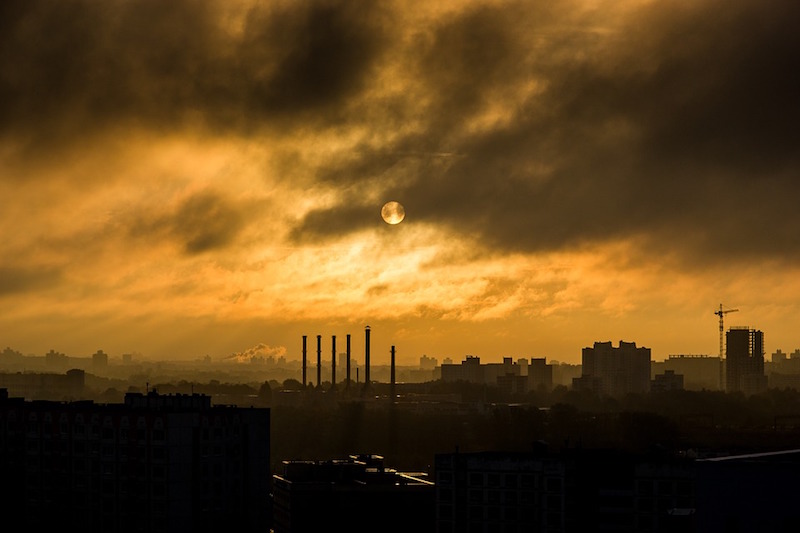Cool roofs are required on most new non-residential buildings in California, but the regulation may be worsening smog.
Cool roofs combat the urban heat island effect by reflecting heat back into the atmosphere. But they also reflect more ultra-violet (UV) light back into the atmosphere, creating more favorable conditions for the chemical reaction that forms ozone or smog.
Southern California would violate federal particulate matter standards for an additional two days a year if cool roofs are widely adopted throughout the region, according to a study by the state’s South Coast Air Quality Management District. Smog would also worsen, especially in Riverside and San Bernardino Counties.
Nevertheless, a researcher for the air quality district said the benefits of cool roofs including lower energy bills, reduced energy consumption, and fewer people suffering from heat-related illnesses would likely outweigh the drawbacks.
Related Stories
| Apr 5, 2012
New IgCC green building code is a ‘game changer,’ AIA official says
An AIA official calls the new International Green Construction Code (IgCC) a “game changer” for sustainable construction.
| Apr 5, 2012
Model energy codes add thousands to cost of new apartment construction, study says
New energy codes could add thousands of dollars to the construction costs of each individual apartment residence in a multifamily building, according to new research commissioned by the National Multi-Housing Council and the National Apartment Association.
| Apr 5, 2012
LEED 2012 will include new requirements for data centers
The U.S. Green Building Council’s updated LEED 2012 standards will require two systems to be modeled for each project in order to show power utilization effectiveness.
| Mar 30, 2012
CSI webinar: Durable & energy efficient building envelope design, April 24
This seminar will review recent changes in North America energy codes, examples of building enclosure wall assemblies being considered for code compliance, potential moisture management and durability challenges, and design tools that could be used to assess and minimize potential problems.
| Mar 30, 2012
Improved construction that followed seismic codes helped avert loss of life in Mexico temblor
A magnitude-7.4 earthquake that shook Mexico from Mexico City to Acapulco damaged hundreds of homes and sent thousands fleeing from swaying office buildings, yet no one was killed, according to early reports.
| Mar 30, 2012
Chicago may allow people to live in retail spaces
The Chicago City Council’s Zoning Committee approved a zoning change that will allow up to 50% of work space in low-intensity business districts to be used for living space.
| Mar 30, 2012
LEED growing fast in the housing rental market
Last year, developers of 23,000 U.S. multifamily housing units applied for LEED certification.
| Mar 30, 2012
Forest Stewardship Council critical of proposed LEED 2012 changes
According to the Forest Stewardship Council (FSC), the third draft of LEED 2012, if approved as written, would represent a step backward from the current Certified Wood Credit.















